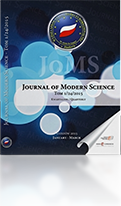Teacher and student perceptions of school climate. Some conclusions from school culture and climate research
Teacher and student perceptions of school climate. Some conclusions from school culture and climate research
Author(s): Urszula DernowskaSubject(s): School education, Sociology of Education
Published by: Wydawnictwo Akademii Nauk Stosowanych WSGE im. A. De Gasperi w Józefowie
Keywords: school climate; social climate; teacher-student perceptions of school setting; teaching-learning environment; case study
Summary/Abstract: School culture and climate, more than any other factors, determine school efficiency. Building a positive school climate means to create the conditions both for students and teachers to work and learn effectively – feeling supported, safe, motivated and satisfied with their outcomes, and ready to contribute to the school improvement. In the light of many research, schools with positive climate are those which pay attention not only to the high academic outcomes, often measured by the tests, but also (or mostly?) to the social and emotional well-being of every student and adult. The subject of the article concerns the perception of school climate and learning setting by teachers and students from two Warsaw high junior schools, which significantly differ from each other in the effect of standardized external tests on students’ academic outcomes. The text contains some conclusions from a multi-faceted exploration of school culture and climate at these schools. First, the author compares teacher – student perception of school climate within the school, and then compares two school workplaces focusing on human relationships as an important factor of school climate. In this text selected cathegories of school climate are analysed: (1) school satisfaction, (2) teacher – student and peer relationships, (3) teachers’ support for students, (4) motivating students to succeed, (5) obeying the students’ rights at school, (6) agressive behavior among students. Quantitative analysis are complemented with qualitative analysis.
Journal: Journal of Modern Science
- Issue Year: 32/2017
- Issue No: 1
- Page Range: 63-82
- Page Count: 20
- Language: English

